Abstract
1. An inhibitor of angiotensin-I-converting enzyme activity (D-3-mercapto-2-methylpropanoyl-L-proline, Captopril) was given to five chronically cannulated pregnant ewes and eleven rabbits in late pregnancy. 2. Within 2 min of administration to the sheep, Captopril had blocked the maternal conversion of angiotensin I to II, as assessed by the pressor response evoked by the i.v. administration of angiotensin I. Maternal and fetal basal systemic blood pressures had fallen within 10 min of administration. Although maternal systemic blood pressure returned to basal levels within 2 hr, fetal pressures remained low for up to 2 days. 3. All ewes went into spontaneous labour at or near term. One lamb was live-born but very weak and failed to establish suckling. The remaining seven lambs were fresh still-births. 4. Gestation length was significantly prolonged in the treated rabbits by comparison with ten controls. The still-birth rate was 37% in the treated animals and 6% in the controls (P less than 0.001). 5. It is concluded that the administration of Captopril to the two species studied is harmful to the fetus. The observations suggest that the drug rapidly crosses the placenta, and may cross the blood-brain barrier to exert a central effect. It may also interfere with the normal initiation of parturition.
Full text
PDF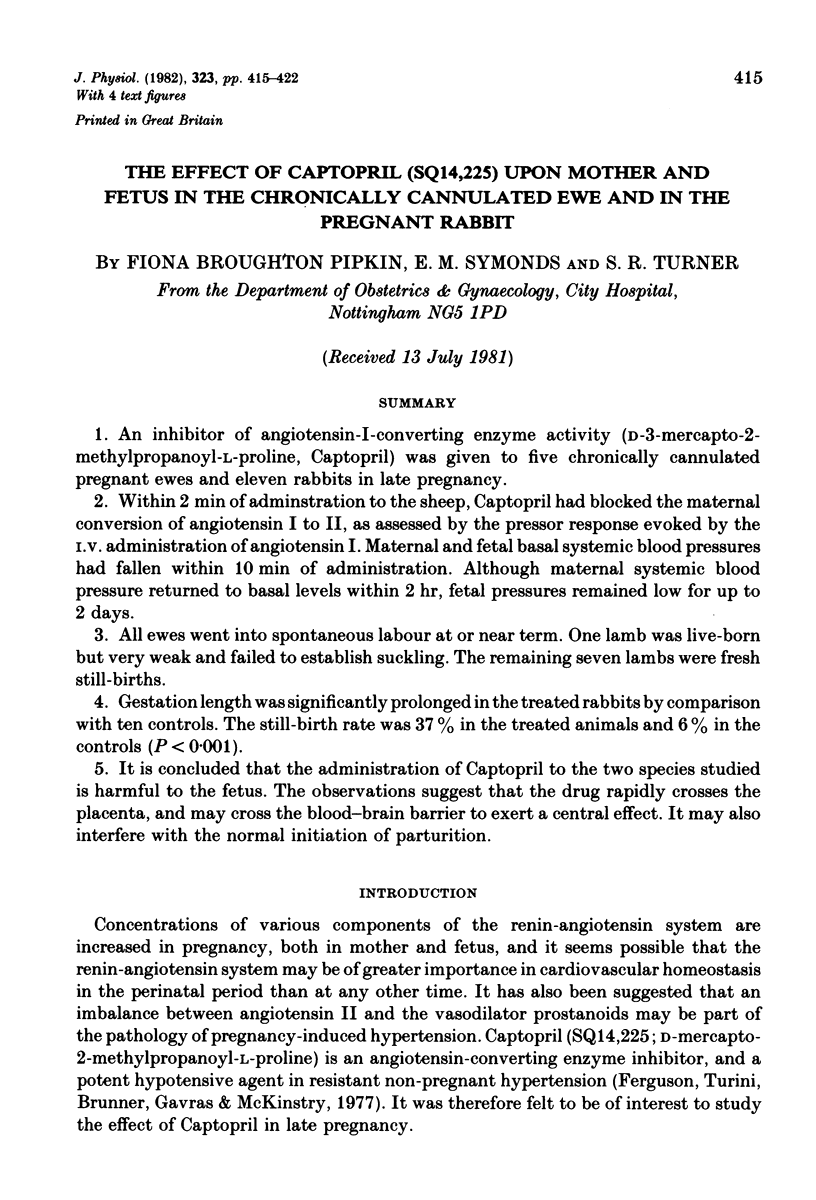
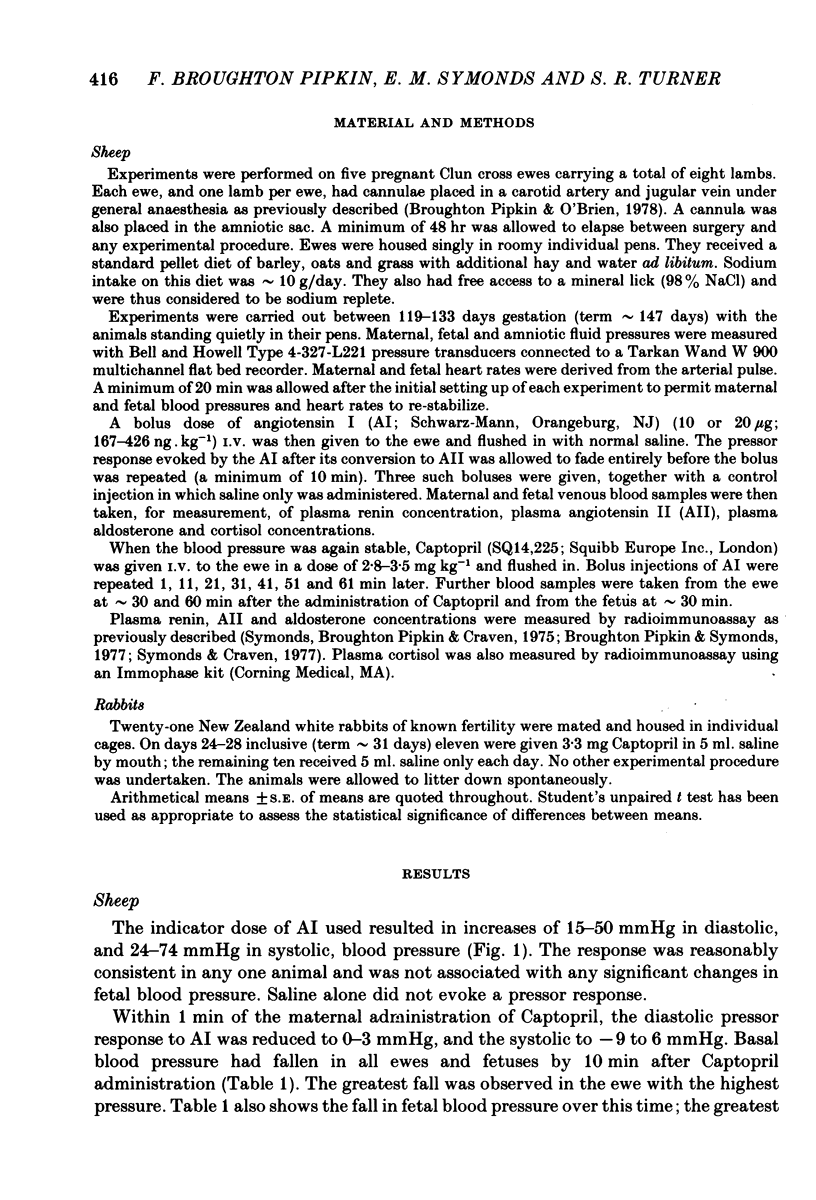
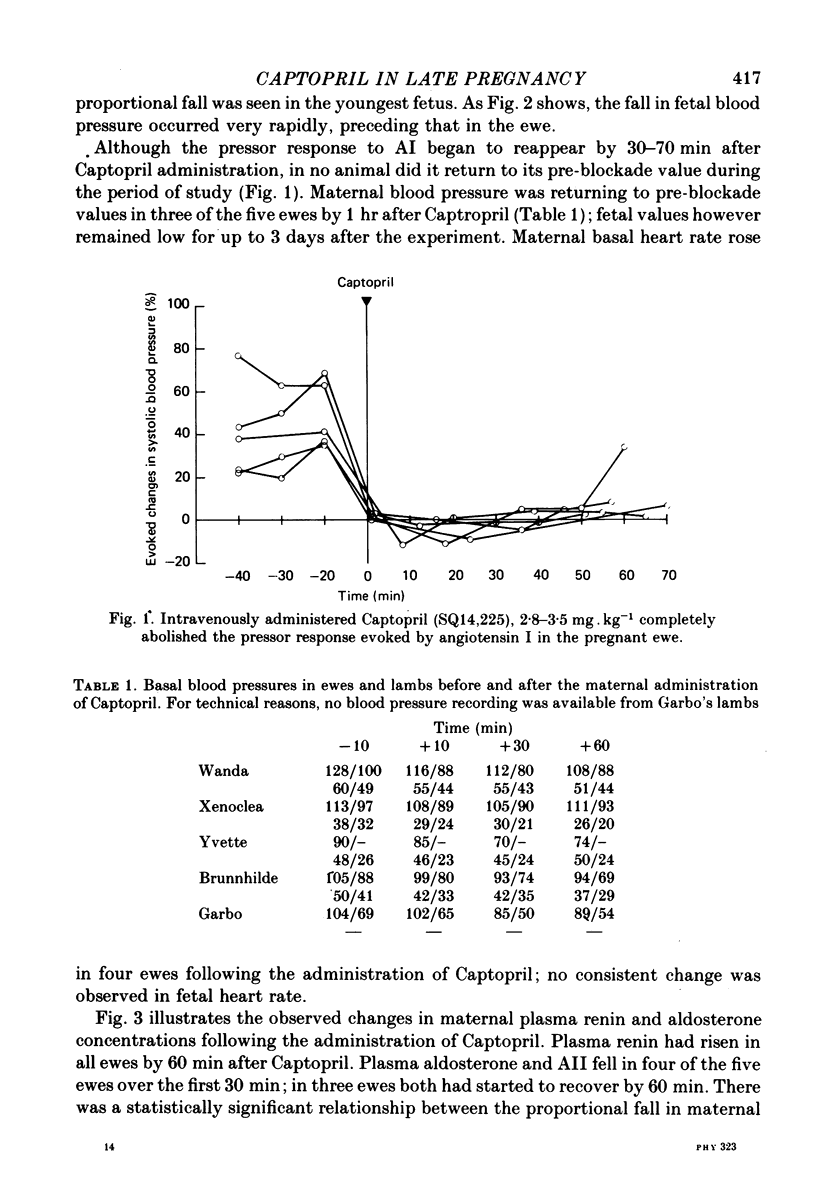
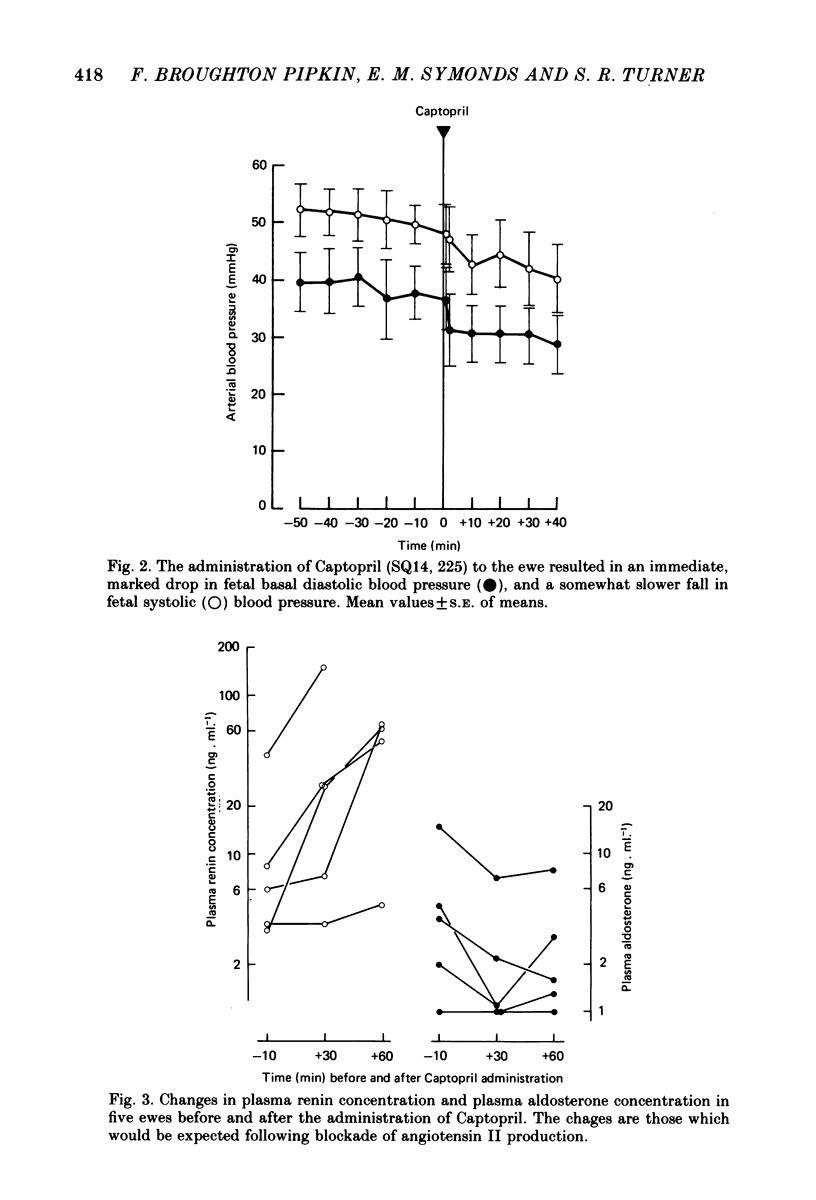
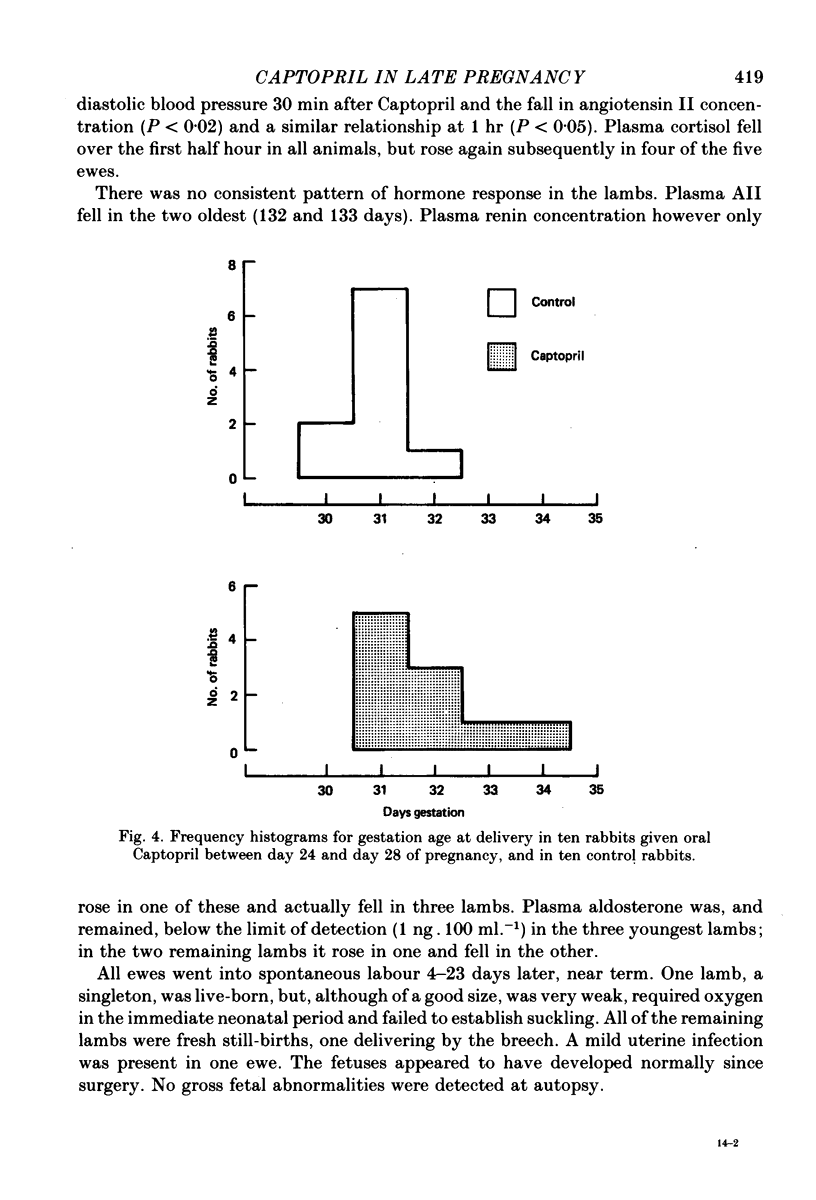
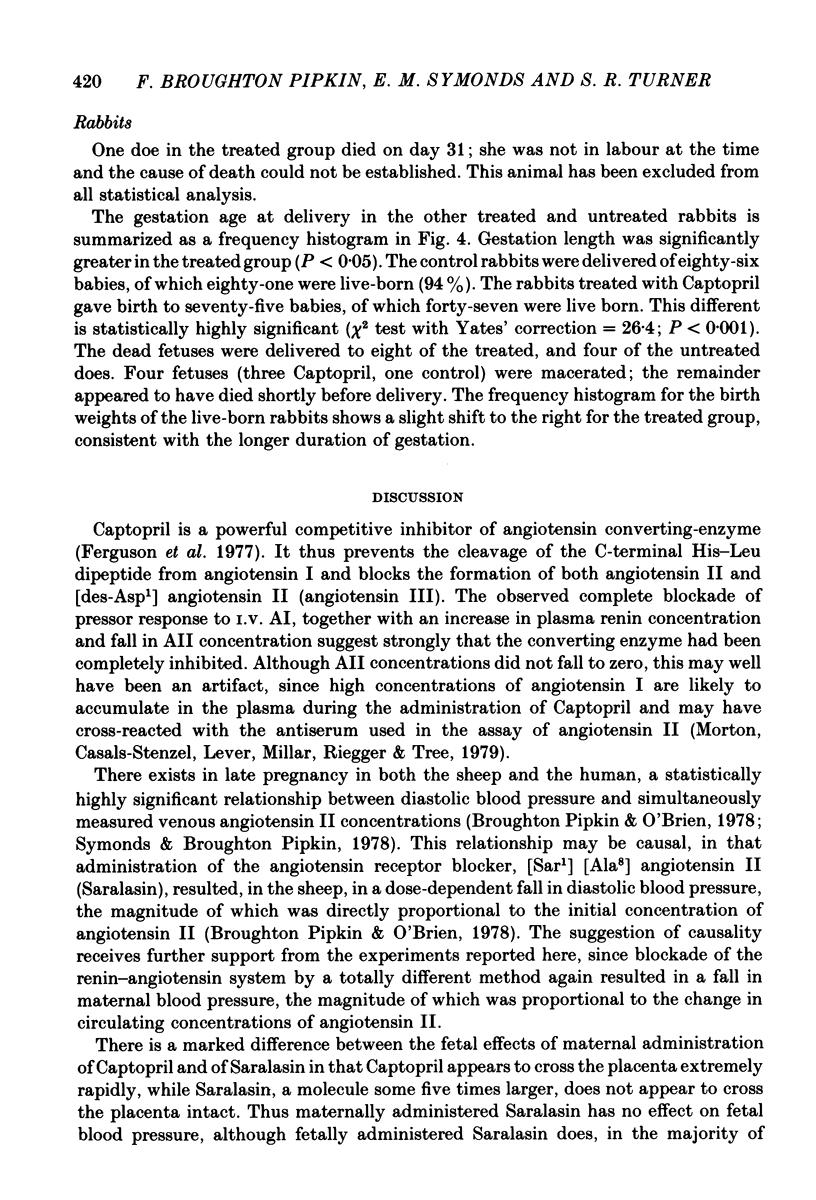
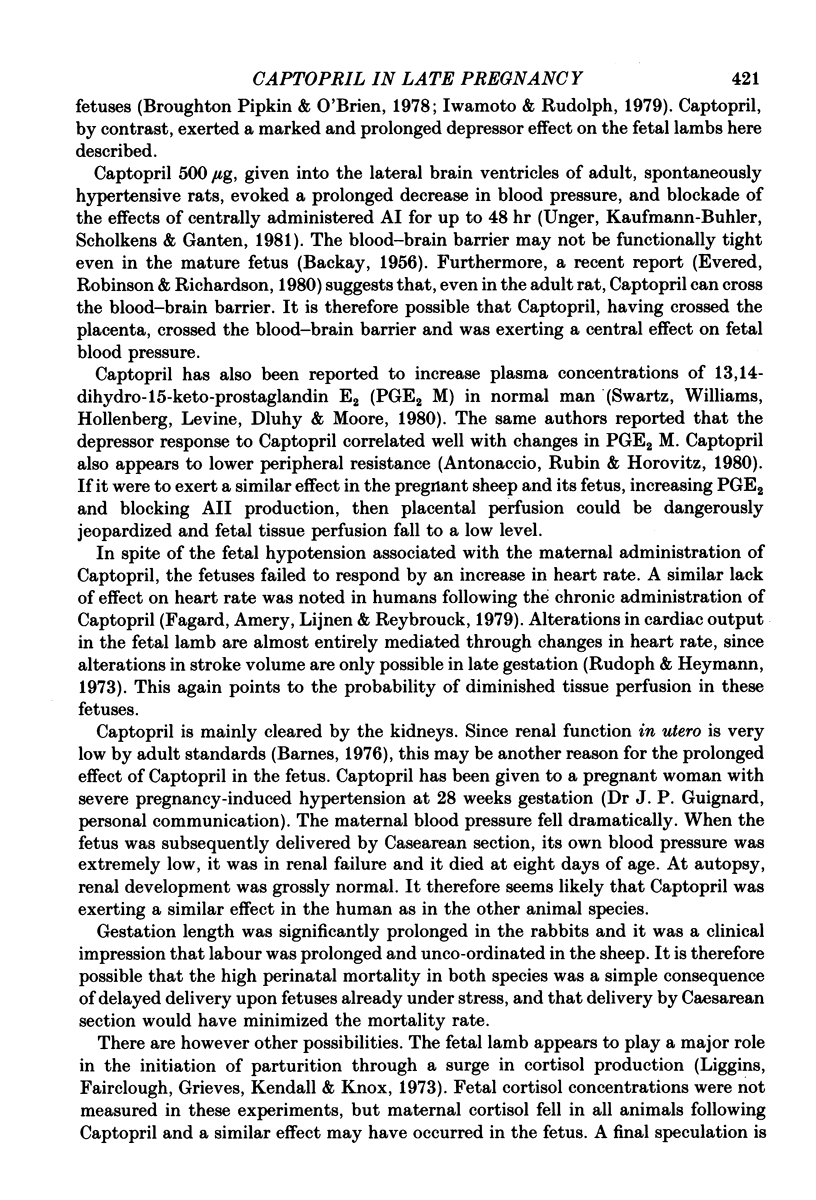
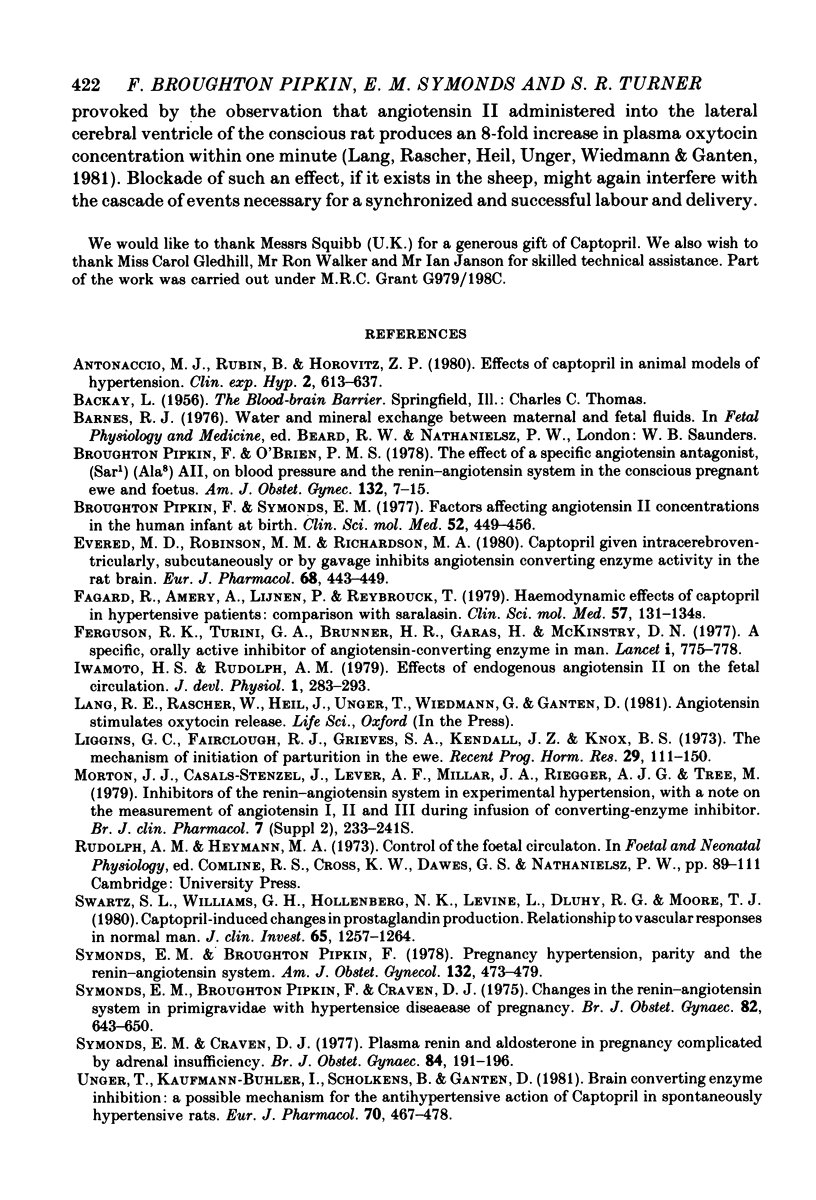
Selected References
These references are in PubMed. This may not be the complete list of references from this article.
- Antonaccio M. J., Rubin B., Horovitz Z. P. Effects of captopril in animal models of hypertension. Clin Exp Hypertens. 1980;2(3-4):613–637. doi: 10.3109/10641968009037133. [DOI] [PubMed] [Google Scholar]
- Broughton Pipkin F., O'Brien P. M. Effect of the specific angiotensin antagonist (Sar1) (Ala8) angiotensin II on blood pressure and the renin-angiotensin system in the conscious pregnant ewe and fetus. Am J Obstet Gynecol. 1978 Sep 1;132(1):7–15. doi: 10.1016/0002-9378(78)90790-1. [DOI] [PubMed] [Google Scholar]
- Broughton Pipkin F., Symonds E. M. Factors affecting angiotensin II concentrations in the human infant at birth. Clin Sci Mol Med. 1977 May;52(5):449–456. doi: 10.1042/cs0520449. [DOI] [PubMed] [Google Scholar]
- Evered M. D., Robinson M. M., Richardson M. A. Captopril given intracerebroventricularly, subcutaneously or by gavage inhibits angiotensin-converting enzyme activity in the rat brain. Eur J Pharmacol. 1980 Dec 19;68(4):443–449. doi: 10.1016/0014-2999(80)90419-7. [DOI] [PubMed] [Google Scholar]
- Fagard R., Amery A., Lijnen P., Reybrouck T. Haemodynamic effects of captopril in hypertensive patients: comparison with saralasin. Clin Sci (Lond) 1979 Dec;57 (Suppl 5):131s–134s. doi: 10.1042/cs057131s. [DOI] [PubMed] [Google Scholar]
- Ferguson R. K., Turini G. A., Brunner H. R., Gavras H., McKinstry D. N. A specific orally active inhibitor of angiotensin-converting enzyme in man. Lancet. 1977 Apr 9;1(8015):775–778. doi: 10.1016/s0140-6736(77)92958-0. [DOI] [PubMed] [Google Scholar]
- Iwamoto H. S., Rudolph A. M. Effects of endogenous angiotensin II on the fetal circulation. J Dev Physiol. 1979 Aug;1(4):283–293. [PubMed] [Google Scholar]
- Liggins G. C., Fairclough R. J., Grieves S. A., Kendall J. Z., Knox B. S. The mechanism of initiation of parturition in the ewe. Recent Prog Horm Res. 1973;29:111–159. doi: 10.1016/b978-0-12-571129-6.50007-5. [DOI] [PubMed] [Google Scholar]
- Morton J. J., Casals-Stenzel J., Lever A. F., Millar J. A., Riegger A. J., Tree M. Inhibitors of the renin-angiotensin system in experimental hypertension, with a note on the measurement of angiotensin I, II and III during infusion of converting-enzyme inhibitor. Br J Clin Pharmacol. 1979;7 (Suppl 2):233S–241S. doi: 10.1111/j.1365-2125.1979.tb04695.x. [DOI] [PMC free article] [PubMed] [Google Scholar]
- Swartz S. L., Williams G. H., Hollenberg N. K., Levine L., Dluhy R. G., Moore T. J. Captopril-induced changes in prostaglandin production: relationship to vascular responses in normal man. J Clin Invest. 1980 Jun;65(6):1257–1264. doi: 10.1172/JCI109788. [DOI] [PMC free article] [PubMed] [Google Scholar]
- Symonds E. M., Broughton Pipkin F., Craven D. J. Changes in the renin-angiotensin system in primigravidae with hypertensive disease of pregnancy. Br J Obstet Gynaecol. 1975 Aug;82(8):643–650. doi: 10.1111/j.1471-0528.1975.tb00700.x. [DOI] [PubMed] [Google Scholar]
- Symonds E. M., Broughton Pipkin F. Pregnancy hypertension, parity, and the renin-angiotensin system. Am J Obstet Gynecol. 1978 Nov 1;132(5):473–479. doi: 10.1016/0002-9378(78)90738-x. [DOI] [PubMed] [Google Scholar]
- Symonds E. M., Craven D. J. Plasma renin and aldosterone in pregnancy complicated by adrenal insufficiency. Br J Obstet Gynaecol. 1977 Mar;84(3):191–196. doi: 10.1111/j.1471-0528.1977.tb12554.x. [DOI] [PubMed] [Google Scholar]
- Unger T., Kaufmann-Bühler I., Schölkens B., Ganten D. Brain converting enzyme inhibition: a possible mechanism for the antihypertensive action of captopril in spontaneously hypertensive rats. Eur J Pharmacol. 1981 Apr 9;70(4):467–478. doi: 10.1016/0014-2999(81)90358-7. [DOI] [PubMed] [Google Scholar]


